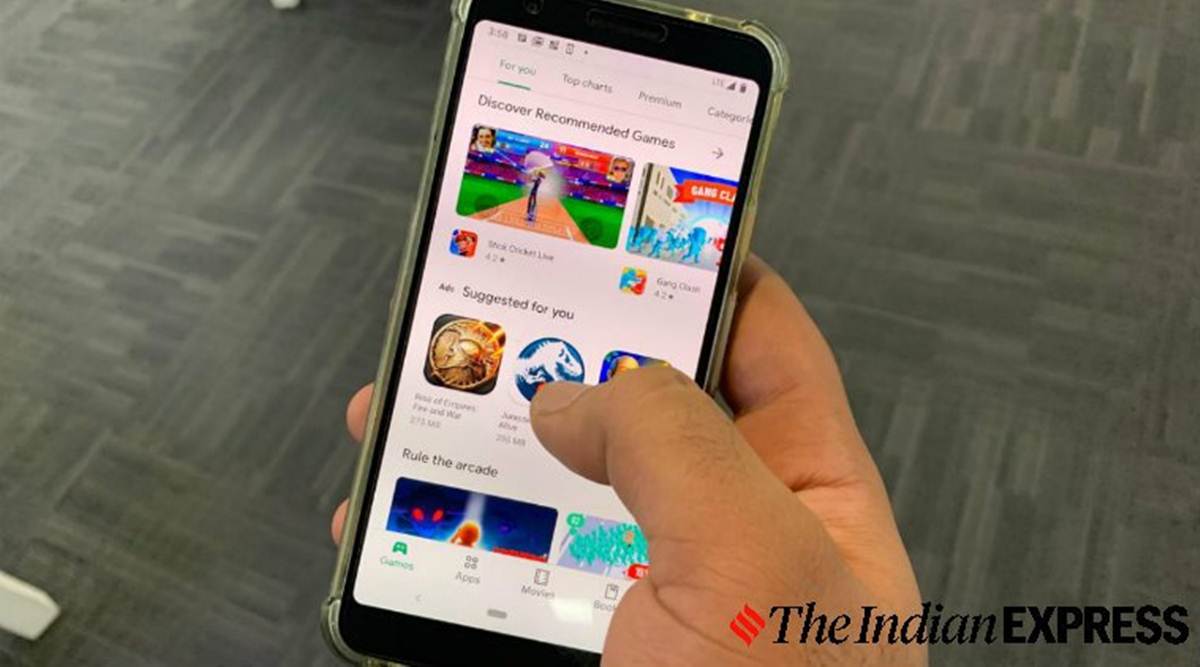 During the study they found out that third-party app stores were only responsible for 10.4 percent of malicious app installs, whereas, the Play Store is responsible for 67.5 percent of installs for malicious apps. (Express Photo: Karanveer Singh Arora)
During the study they found out that third-party app stores were only responsible for 10.4 percent of malicious app installs, whereas, the Play Store is responsible for 67.5 percent of installs for malicious apps. (Express Photo: Karanveer Singh Arora)Google Play Store is the main distribution vector for malware on Android phones according to a new report by NortonLifeLock and the IMDEA Software Institute in Madrid. According to the report, 67.2 percent of malicious app installs came from the Google Play Store.
The researchers have stated that the reason behind such a massive malware distribution centre is that the Google Play Store has a huge volume of downloads compared to any other sources on Android phones. They also stated that the defences do work for most, however, a few sneak past.
The study was conducted on 12 million Android devices with data from 7.9 million over a four-month period. The study compared app downloads from the Play store, alternative markets, web browsers, from commercial PPI (pay-per-install) programs, from instant message, and seven other sources.
During the study they found out that third-party app stores were only responsible for 10.4 percent of malicious app installs, whereas, the Play Store is responsible for 67.5 percent of installs for malicious apps. However, the vector detection ratio (VDR) for Google Play Store is still the lowest compared to other sources of app installs at only 0.6 percent.
Unofficial alternate markets had a total of 5.7 percent downloads with over 10 percent unwanted installs. Backup installs account for 2 percent and out of them 4.8 percent were unwanted. Installs from package installers account for 0.7 percent out of which 10.5 percent were unwanted.
The researchers have also stated that between 10 to 24 percent of Android users come across at least one unwanted app in their phones.
Express Tech is now on Telegram. Click here to join our channel (@expresstechie) and stay updated with the latest tech news.